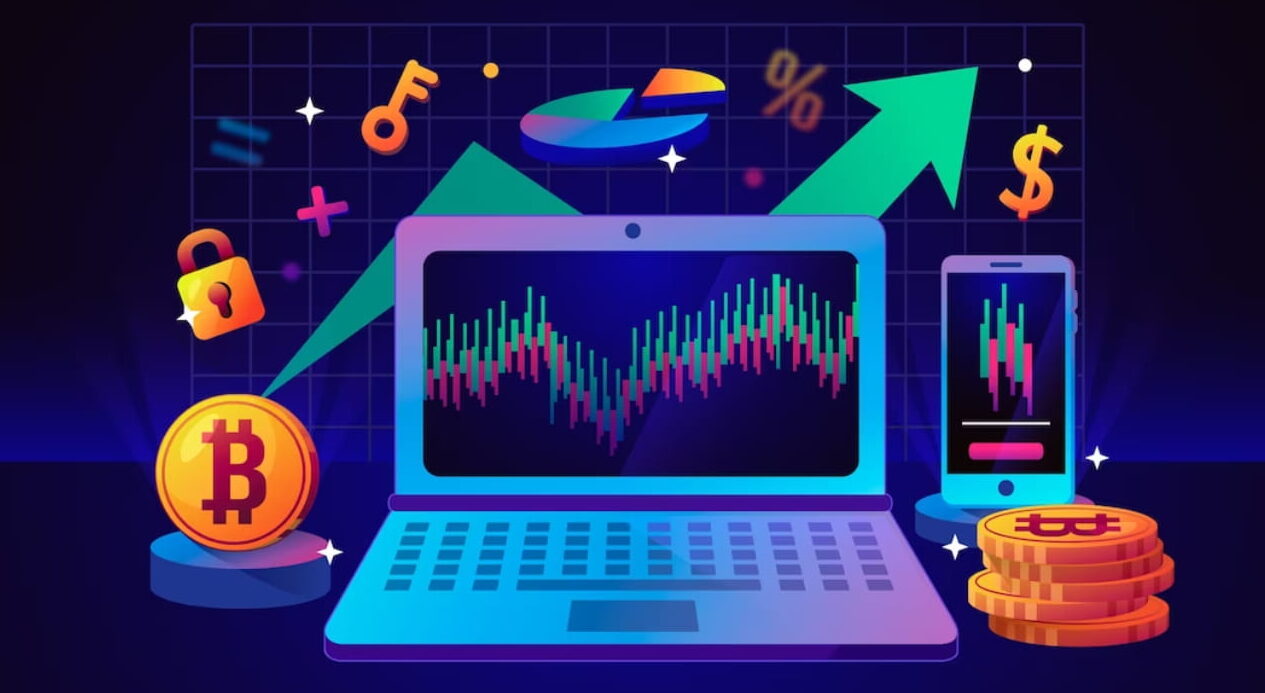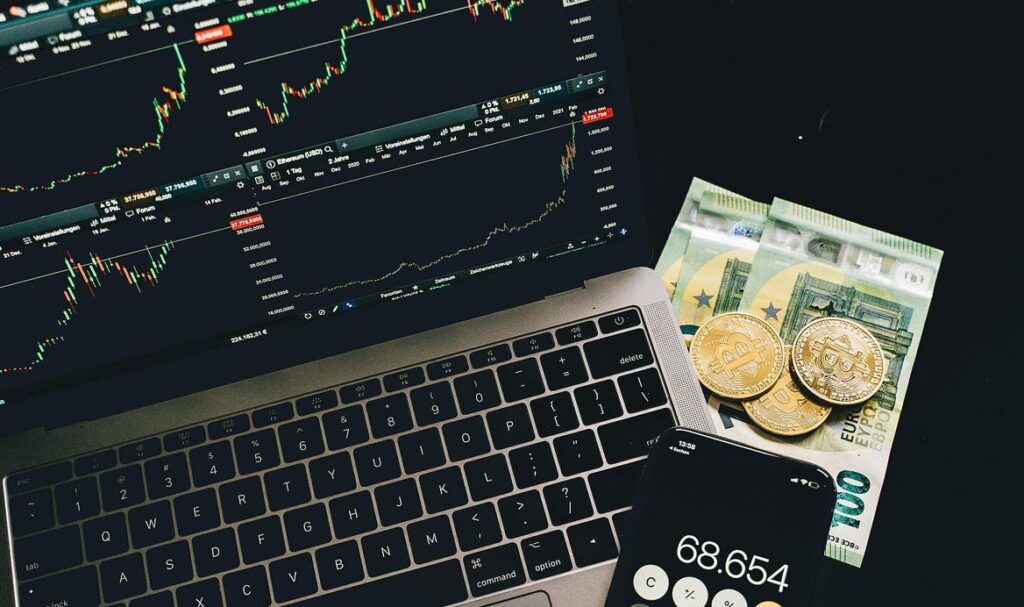The cryptocurrency market never sleeps, and neither should your trading strategy. In today’s volatile digital asset landscape, successful traders rely on sophisticated cryptocurrency trading analytics software to gain a competitive edge. These powerful platforms transform raw market data into actionable insights, helping traders identify profitable opportunities while managing risk effectively.
Whether you’re a seasoned institutional investor or an ambitious retail trader, the right analytics software can be the difference between substantial gains and devastating losses. With over $1.7 trillion in daily crypto trading volume, having access to real-time data analysis, technical indicators, and portfolio tracking tools isn’t just an advantage—it’s essential for survival in this fast-paced market. This comprehensive guide explores the best cryptocurrency trading analytics software available in 2025, examining their features, pricing, and unique capabilities to help you make an informed decision for your trading journey.
What is Cryptocurrency Trading Analytics Software?
Cryptocurrency trading analytics software encompasses specialized platforms designed to analyze digital asset markets, price movements, and trading patterns. These sophisticated tools aggregate data from multiple exchanges, process complex algorithms, and present actionable insights through intuitive dashboards.

Modern analytics platforms go beyond basic price tracking. They incorporate machine learning algorithms, sentiment analysis, and advanced technical indicators to provide comprehensive market intelligence. Features typically include portfolio management, risk assessment, automated trading signals, and detailed performance reporting. The evolution of crypto analytics has transformed how traders approach the market. Early adopters who relied on basic charts and gut instincts have been replaced by data-driven professionals who leverage sophisticated software to maximize returns while minimizing exposure to market volatility.
Key Features to Look for in Crypto Trading Analytics Platforms
Real-Time Market Data Integration
The foundation of effective cryptocurrency trading analytics software lies in its ability to process real-time data from multiple sources. Leading platforms connect to hundreds of exchanges simultaneously, ensuring you never miss critical market movements or arbitrage opportunities.
Quality platforms offer sub-second data updates, comprehensive order book analysis, and cross-exchange price comparison features. This real-time capability allows traders to execute strategies based on the most current market conditions, particularly crucial in the highly volatile cryptocurrency environment.
Advanced Technical Analysis Tools
Professional-grade analytics software provides extensive technical analysis capabilities, including over 100 technical indicators, customizable charting tools, and pattern recognition algorithms. These features enable traders to identify trends, support and resistance levels, and potential reversal points with greater accuracy.
Modern platforms incorporate AI-powered analysis that can detect complex patterns human traders might miss. Machine learning algorithms continuously analyze historical data to improve prediction accuracy and identify emerging market trends before they become apparent to the broader market.
Portfolio Management and Performance Tracking
Comprehensive portfolio management features allow traders to track performance across multiple exchanges and wallets from a single dashboard. Advanced platforms provide detailed profit and loss statements, tax reporting capabilities, and risk-adjusted performance metrics.
Performance tracking extends beyond simple gains and losses. Quality software analyzes trading patterns, identifies strengths and weaknesses in strategy execution, and provides recommendations for improvement. This data-driven approach to portfolio management helps traders refine their strategies and achieve more consistent results.
Top Cryptocurrency Trading Analytics Software in 2025
Professional-Grade Analytics Platforms
TradingView remains the industry standard for technical analysis, offering robust charting capabilities, social trading features, and extensive indicator libraries. The platform’s Pine Script programming language allows advanced users to create custom indicators and automated trading strategies.
Messari provides institutional-grade research and analytics, focusing on fundamental analysis and market intelligence. Their platform combines quantitative data with qualitative research, making it invaluable for long-term investment decisions and market trend analysis. CryptoQuant specializes in on-chain analytics, providing insights into blockchain data, whale movements, and network health. This platform excels at identifying macro trends and potential market turning points based on fundamental blockchain metrics.
Retail-Focused Analytics Solutions
3Commas combines analytics with automated trading, offering portfolio management, trading bots, and performance tracking in a user-friendly interface. The platform’s Smart Trading feature helps users execute complex strategies without constant monitoring.
CoinTracker focuses on portfolio tracking and tax compliance, providing comprehensive transaction analysis and automated tax report generation. This platform is particularly valuable for traders who need detailed records for regulatory compliance.
Blockfolio (now FTX App) offers mobile-first portfolio tracking with social features, news integration, and basic analytics capabilities. While less sophisticated than professional platforms, it provides essential functionality for casual traders.
Benefits of Using Crypto Trading Analytics Software
Enhanced Decision-Making Capabilities
Data-driven decision making represents the primary advantage of using sophisticated analytics software. By processing vast amounts of market data, these platforms identify patterns and opportunities that would be impossible to detect manually.
Advanced analytics help traders overcome emotional decision-making, one of the most common causes of trading losses. When faced with market volatility, having objective data and clear signals helps maintain disciplined trading strategies and avoid panic-driven mistakes.
Risk Management and Loss Prevention
Modern cryptocurrency trading analytics software incorporates sophisticated risk management tools, including position sizing calculators, stop-loss optimization, and correlation analysis. These features help traders maintain appropriate risk levels and protect capital during adverse market conditions.
Portfolio diversification analysis ensures traders aren’t overexposed to specific assets or market sectors. Advanced platforms provide stress testing capabilities, showing how portfolios might perform under various market scenarios, enabling proactive risk mitigation strategies.
Time Efficiency and Automation
Analytics software dramatically reduces the time required for market analysis. Instead of manually checking multiple exchanges, analyzing charts, and calculating performance metrics, traders can access comprehensive insights instantly through centralized dashboards.
Automation features, including alert systems and trading signals, ensure traders never miss important opportunities. Custom notifications can be configured for specific price levels, technical indicator signals, or news events, allowing traders to respond quickly to market changes.
How to Choose the Right Analytics Software for Your Needs
Assessing Your Trading Style and Requirements
Different trading styles require different analytical approaches. Day traders need real-time data feeds, advanced charting capabilities, and rapid execution features. Swing traders might prioritize trend analysis tools and portfolio management capabilities.
Long-term investors typically focus on fundamental analysis features, including project valuation metrics, network health indicators, and market sentiment analysis. Understanding your specific requirements helps narrow down platform options and ensures you invest in software that aligns with your trading strategy.
Budget Considerations and Pricing Models
Analytics software pricing varies significantly, from free platforms with limited features to professional solutions costing thousands of dollars monthly. Consider the total cost of ownership, including data feeds, exchange API connections, and premium features.
Many platforms offer tiered pricing structures, allowing users to start with basic functionality and upgrade as their needs grow. Evaluate whether the potential improvement in trading performance justifies the software cost, considering both subscription fees and opportunity costs of inferior tools.
Integration and Compatibility Requirements
Ensure your chosen platform integrates seamlessly with your existing trading setup, including exchange accounts, wallets, and other software tools. API connectivity, data export capabilities, and third-party integrations can significantly impact workflow efficiency.
Consider mobile accessibility if you need to monitor markets and execute trades while away from your primary trading setup. Many platforms offer mobile apps or responsive web interfaces that maintain full functionality across devices.
Implementation Best Practices for Crypto Analytics Tools
Setting Up Effective Monitoring Systems
Successful implementation begins with proper system configuration. Establish clear monitoring protocols, including which metrics to track, how frequently to review performance, and when to adjust strategies based on analytical insights.
Create customized dashboards that display the most relevant information for your trading style. Avoid information overload by focusing on key performance indicators that directly impact your decision-making process.
Developing Data-Driven Trading Strategies
Use historical backtesting features to validate trading strategies before risking real capital. Quality cryptocurrency trading analytics software provides comprehensive backtesting capabilities, allowing traders to refine strategies based on historical market conditions.
Combine multiple analytical approaches for more robust strategies. Technical analysis, fundamental analysis, and sentiment analysis each provide unique insights that, when combined, create more reliable trading signals than any single approach.
Continuous Learning and Strategy Refinement
Analytics software provides continuous learning opportunities through detailed performance analysis and market insights. Regularly review trading performance, identify patterns in successful and unsuccessful trades, and adjust strategies accordingly.
Stay updated with platform updates and new features. Analytics software continues evolving, incorporating new data sources, improved algorithms, and enhanced user interfaces that can improve trading effectiveness.
Common Mistakes to Avoid
Over-Reliance on Automated Signals
While analytics software provides valuable insights, successful trading requires human judgment and market understanding. Avoid blindly following automated signals without understanding the underlying logic and market context.
Maintain a balance between analytical insights and market intuition. The most effective traders combine sophisticated analytics with experience-based judgment to navigate complex market conditions.
Neglecting Risk Management Principles
Advanced analytics can create false confidence, leading traders to take excessive risks. Maintain strict risk management discipline regardless of analytical insights, including position sizing, stop-loss orders, and portfolio diversification.
Remember that past performance doesn’t guarantee future results. Even the most sophisticated analytics software cannot predict market movements with complete accuracy, making risk management essential for long-term success.
Future Trends in Crypto Trading Analytics
Artificial Intelligence and Machine Learning Integration
The next generation of cryptocurrency trading analytics software will leverage advanced AI and machine learning algorithms to provide more accurate predictions and automated strategy optimization. These technologies will analyze vast datasets to identify subtle patterns and market inefficiencies.
Natural language processing will enable platforms to analyze news sentiment, social media trends, and regulatory announcements in real-time, incorporating qualitative factors into quantitative analysis frameworks.
Cross-Chain Analytics and DeFi Integration
As the cryptocurrency ecosystem becomes more interconnected, analytics platforms will expand beyond traditional trading to include DeFi protocols, yield farming opportunities, and cross-chain asset movements.
 Advanced platforms will provide comprehensive analysis of decentralized finance strategies, including liquidity pool performance, impermanent loss calculations, and optimal yield farming strategies across multiple protocols
Advanced platforms will provide comprehensive analysis of decentralized finance strategies, including liquidity pool performance, impermanent loss calculations, and optimal yield farming strategies across multiple protocols
Final Thoughts
Selecting the right cryptocurrency trading analytics software represents a critical decision that can significantly impact your trading success. The platforms discussed in this guide offer various features and capabilities suited to different trading styles, experience levels, and budget constraints.
Remember that analytics software serves as a tool to enhance your trading decisions, not replace sound judgment and risk management practices. The most successful traders combine sophisticated analytical insights with disciplined execution and continuous learning. Take action today by evaluating your specific needs and testing the platforms that best align with your trading goals. Many providers offer free trials or basic plans that allow you to experience their capabilities before committing to premium subscriptions. Start with a platform that matches your current skill level and grow into more advanced features as your expertise develops.


